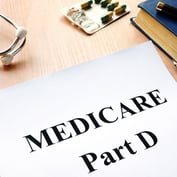States that keep Medicaid eligibility narrow could drive up costs in the private individual health insurance market, according to a work group at the American Academy of Actuaries (AAA).
Rates would rise because narrow Medicaid eligibility rules could force commercial insurers to enroll a wave of low-income consumers with health problems, the work group says.
The Patient Protection and Affordable Care Act (PPACA) calls for states to expand Medicaid eligibility for adults to residents with incomes under 133 percent of the federal poverty level (FPL), from 100 percent or less today. Because Medicaid ignores 5 percent of income when determining eligibility, the change really would increase the eligibility cut-off to 138 percent of FPL, the work group says.
The Supreme Court ruled this summer that the federal government can encourage states to expand Medicaid eligibility to 133 percent of FPL by offering new aid, but that the federal government cannot penalize states for “lack of effort” by taking away existing funding. Some states are trying to hold the Medicaid eligibility cut-off for their adult residents to 100 percent of FPL or less. Officials in those states argue that their states cannot afford to expand Medicaid eligibility at this time.
PPACA will require insurers to sell individual and small group coverage on a guaranteed-issue, mostly community-rated basis starting in 2014. If PPACA takes effect as written and works as drafters expect, individual insurers will not be able to take an applicant’s health status into account when deciding whether to offer coverage or determining the price of the coverage.
PPACA also requires the federal government to provide new health insurance purchase subsidies for consumers with incomes from 133 percent to 400 percent of FPL.








 September 17, 2012 at 10:55 AM
September 17, 2012 at 10:55 AM










